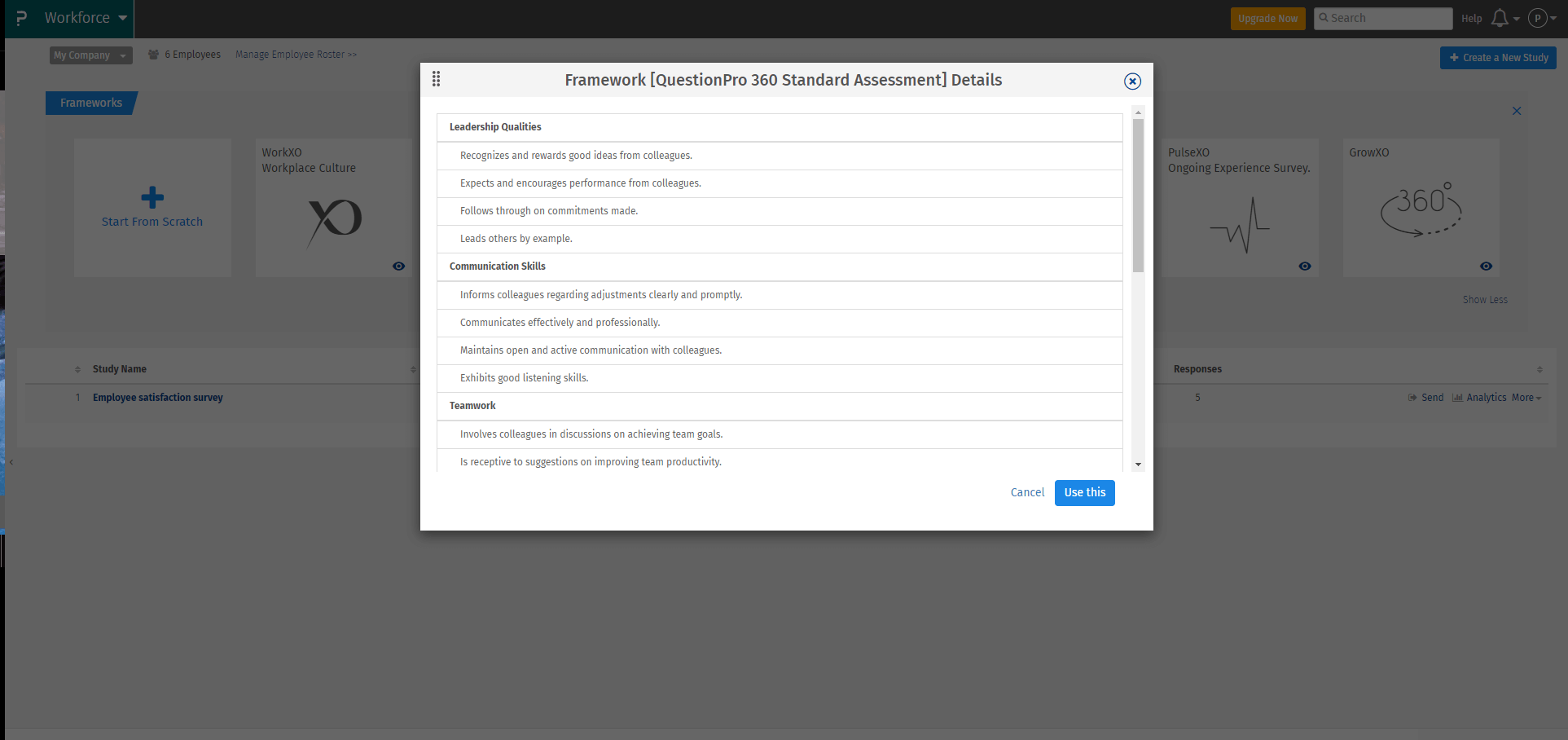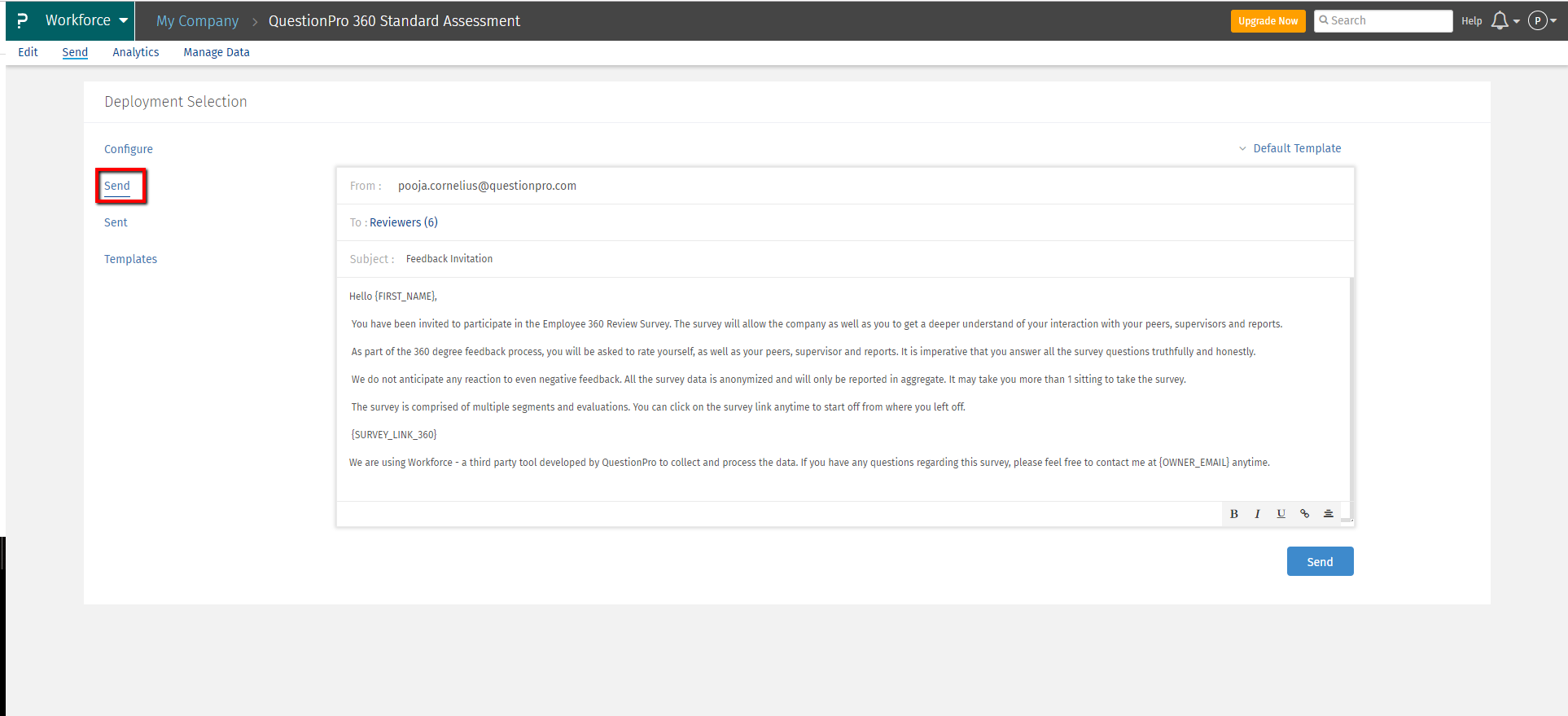360-degree feedback is the process through which you get overall feedback for an employee. The anonymous feedback is gathered from immediate managers, peers, colleagues giving a detailed assessment of the employee’s performance. An employee interacts with several stakeholders internally and externally. It is crucial, hence, to get feedback from all these stakeholders. The employee also gets to fill-in a self assessment form that lets compare similarities and differences. Organizations like 360-degree feedback as it helps identify blind spots. This helps in implementing corrective measures at the earliest.
Leadership, clear and transparent communication, a drive for results, commitment and teamwork are qualities that any employee should have. Organizations need to know at which areas employees excel at and which ones require work. 360 degree feedback helps identify these areas and many more. It helps managers and senior leaders in the following ways:
-
Lets peers, seniors, managers, and supervisors rate an employee based on key performance indicators (KPI).
-
Informs an employee about the team’s core competencies.
-
Is a form of evaluation that notifies an employee about areas of improvement and rewards their strengths.
-
Offers an employee their peer’s perspective on their approachability and soft skills.
-
Offers insights on an employee’s performance which plays a key role in team dynamics.
-
Assists team members uncover blind spots in their performance.
-
Delivers multi-rating feedback that helps in identifying improvement areas. These can be bucketed as per the urgency and level of attention or training required for that employee.
-
Makes employees self-aware and aspirational in their pursuit of improvement.
-
Boosts the collective confidence of a team and builds team morale.
-
Promotes inclusiveness and transparency within an organization.
-
Empowers employees within the hierarchy and encourages participation.
An employee interacts or collaborates with many colleagues, and hence, it’s crucial to get feedback from all stakeholders for overall development. Here are a few benefits of 360 degree performance feedback.
- Skill development: Since all stakeholders provide inputs about the employee’s performance, they get a clear idea of what areas need improvement. Based on that, they can develop plans and programs to upskill or reskill.
- Uncover overlooked issues: Employees may not be aware of some of the mistakes they might be committing, or areas they might be underperforming in. Having a multi-level feedback ensures they become aware of the issues they might overlook or be unaware of.
- Highlights strengths:A thorough review brings to the fore an employee’s strengths and weaknesses. While identifying strengths and weaknesses both is important, identifying strengths helps identify areas in which they excel. The team, the organization can capitalize on those strengths.
- Holistic view: 360 degree reviews give a holistic view of an employee’s strengths, weaknesses, capabilities, etc. This helps not only the employee but also their manager in goals management, performance improvement, etc.
- Makes employees self-aware: When employees get feedback from their managers, peers, subordinates, and clients it makes them aware of the improvements that they need to focus on. They get a sense of their strengths, weaknesses, skills, development, etc. to work on.
- Encourages communication: A feedback from all your stakeholders opens up dialogue and encourages employees to seek additional feedback for improvements. This also helps in understanding how other departments work, what challenges they face, etc.
- Improves relationships: 360 degree review encourages communication which helps a lot in improving relationships. You can clarify your doubts, express any concerns, and work on finding solutions.
- Higher accountability: Getting all-around feedback helps improve employee accountability. They improve their performance, are more vigilant when working on assignments, and take on more responsibilities. This process improves employee engagement and helps in improving employee productivity and employee retention.
- Openness to feedback: Speaking to all the stakeholders you work with highlights many points that you may overlook or may not be aware of. 360 degree reviews help employees a lot in performance improvement. This makes them more open to reviews and other continuous performance management processes.
Conducting surveys for 360 degree performance appraisals is a good idea. It helps you gather feedback from multiple stakeholders and it’s easier to collate all this information. Online survey tools offer a host of options for 360 degree reviews such as anonymous feedback, detailed analytics, report sharing, etc. With a survey tool, you can conduct multiple dedicated surveys, targeted at different stakeholders and invite responses. With different surveys, you can focus on different aspects of the employee’s performance which makes it easier to provide feedback. An ideal 360 degree review questionnaire template should cover the following aspects:
- Customer oriented approach: When it comes to customers, a lot of things come into play. These can be delivery deadlines, customer communication, etc. Via the survey, you need to understand if the employee is abiding by all the processes, is the customer happy and updated with all the developments among other things.
- Team dynamics: Is the employee an effective team player? Are the team’s views, ideas, and concerns taken into consideration? These are just some of the areas the survey should cover. An individual’s performance is important but so is the team’s. The survey will help in highlighting gaps and bridging them.
- Communication: Clear and transparent communication is key for any employee, be it internal or external. When communicating the employee needs to be respectful and use proper language. Depending on the feedback, if necessary, appropriate training can be provided.
- Employee productivity: Productivity levels of the employee need to be seen, are tasks being completed on time? How productive is the employee individually and in teams? In case of any concerns, you can devise actions to improve their productivity, provide appropriate training, etc.
- Leadership skills: Feedback from peers and subordinates is also sought in the process. This lets organizations know if the employee has leadership skills, does the team see them as a leader, etc. This is crucial for the appraisal process, defining new goals, and succession planning.
- Employee engagement: Finding if an employee is engaged or not is important. This affects their performance and possibly their teams. This could even hamper customer relations and operations. Getting feedback from other stakeholders can let organizations know if that is the case. Remedial actions can follow to ensure no problems arise.
Here is a free sample of a 360-degree review survey template and sample questionnaire that you can use in your organization.
Creating and deploying a 360 degree survey is a matter of minutes with QuestionPro Workforce. All you will need to do is follow these simple steps:
Step 1: Login to your QuestionPro account >> Workforce
Step 2: Create a new study
Step 3: Click on GrowXo/360-degree feedback survey
Step 4: Choose from the pre-defined frameworks
Step 5: Once your survey is ready it is ready for deployment
Survey Software Easy to use and accessible for everyone. Design, send and analyze online surveys.
Research Suite A suite of enterprise-grade research tools for market research professionals.
Customer Experience Experiences change the world. Deliver the best with our CX management software.
Employee Experience Create the best employee experience and act on real-time data from end to end.

















